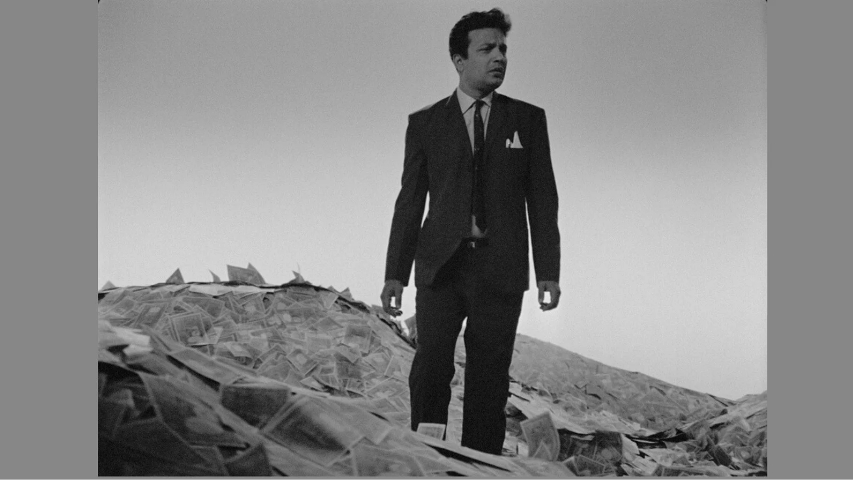
THOUGHT FACTORY: SATYAJIT RAY’S MASTERPIECES RESTORED
by Editorial Desk March 1 2025, 12:00 am Estimated Reading Time: 3 mins, 18 secsRestoring Satyajit Ray’s cinematic gems is more than preserving film; it safeguards history, culture, and artistic vision, ensuring future generations experience these masterpieces as originally envisioned. The #Newsdesk reports.
The restoration of Satyajit Ray’s classic films, including Charulata, Mahanagar, Nayak, Kapurush, Mahapurush, and Jai Baba Felunath, is a vital effort in preserving India’s cinematic heritage. Digitally restored in 2K resolution, these masterpieces have been revived to their original glory, ensuring their availability on global platforms, including film festivals, OTT streaming, and Blu-ray. With increasing worldwide demand for Ray’s iconic storytelling, the restoration process not only enhances visual and sound quality but also reintroduces these timeless classics to new audiences. Discover the brilliance of Ray’s vision through these meticulously restored films, now accessible to cinephiles worldwide.

Cinema is more than just storytelling—it is an archive of time, an interpretation of space, and an expression of evolving societies. The restoration of classic films is not merely an exercise in digital enhancement but a mission to preserve history itself. Recognizing this, RDB & Co. undertook the monumental task of restoring six of Satyajit Ray’s most revered films: Charulata, Mahanagar, Nayak, Kapurush, Mahapurush, and Jai Baba Felunath. Between 2011 and 2013, these cinematic treasures were meticulously restored, ensuring that Ray’s artistic vision continues to reach audiences across generations and continents.
A Complex and Costly Undertaking
Film restoration is a painstaking and expensive endeavour that demands immense resources, expertise, and time. The restoration of these six films took nearly eighteen months, involving over 200 skilled technicians. RDB & Co. saw this project not only as a commitment to India’s cinematic heritage but also as a response to the growing global demand for these classics. Since their restoration, these films have travelled to over 40 countries, being screened at prestigious festivals, cinematheques, and museums. Today, they continue to find audiences through theatrical releases, Blu-ray home video, and OTT platforms across 20 countries.
The impact of these restored classics has been undeniable. The international film fraternity has honoured them with official selections at some of the world’s most respected festivals, including Charulata at Cannes International Film Festival 2013, Kapurush and Mahapurush at Venice International Film Festival 2013, Nayak at Berlin International Film Festival 2014, and Mahanagar at BFI Film Festival, London 2012. These selections reaffirm the timelessness of Ray’s cinema and the crucial role of film restoration in bringing these masterpieces back to global screens.
The Science and Art of Film Restoration
Each of these six films was restored from the original 35mm camera negatives preserved by the producers. The restoration process involved frame-by-frame 2K resolution scanning, followed by meticulous repair of various defects such as dust, scratches, flicker, mould damage, and film tears. The challenge was to restore the films to their original glory while maintaining the authenticity of Ray’s vision, ensuring that no artificial artifacts were introduced. For sound restoration, the original sources suffered from significant degradation, including low-frequency pops, clicks, crackle, noise, and hiss. A detailed micro-level manual restoration process was employed to eliminate these imperfections, bringing the films’ soundscapes closer to the original recordings.
Why Classic Film Restoration Matters
The entire restoration was conducted in India at Pixion Studios and Cameo Media Labs, commissioned by RDB Entertainments, an associate company of RDB & Co. Their commitment to preserving these cinematic gems has ensured that Ray’s vision remains accessible to future generations, bridging the gap between past and present.
Restoring classic cinema is an investment in cultural preservation. It ensures that future generations can witness history through the eyes of legendary filmmakers like Satyajit Ray, experiencing how cinema once interpreted time, space, and human emotions. It is a reminder that while technology may evolve, the essence of great storytelling remains eternal. As these restored masterpieces continue to find new audiences worldwide, they reinforce the importance of safeguarding cinematic heritage—one frame at a time.





-173X130.jpg)
-173X130.jpg)
-173X130.jpg)
-173X130.jpg)
-173X130.jpg)
-173X130.jpg)

-173X130.jpg)